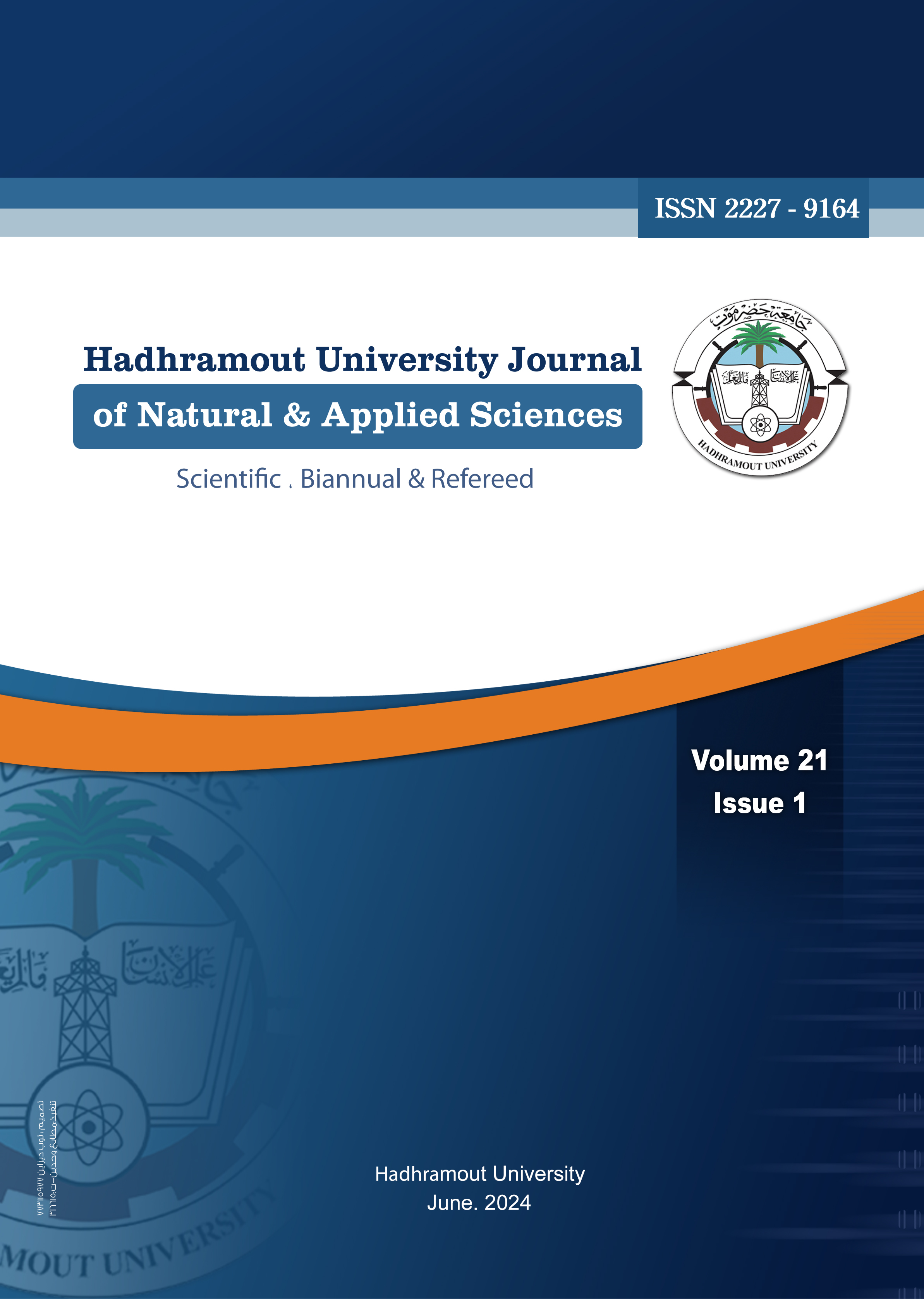Studying The Effect of Irrigation Periods and Potassium Fertilization on The Growth of Sorghum
Keywords:
Irrigation periods, potassium fertilization, sorghum cropAbstract
This study was conducted with the aim of the urgent need to conduct applied research that leads to
appropriate utilization of available water, and given the importance of the crop in terms of water and fertilizer needs
and the absence of studies in this field. Therefore, the aim of implementing the research is to study the effect of
different rates of potassium fertilization and periods. Different irrigations on sorghum growth Sorghum bicolor L.
This research study was carried out in the experimental field of the research farm of the General Authority for
Agricultural Research, Marib Governorate - Republic of Yemen, for two consecutive agricultural seasons 2021 -
2022 AD to study the effect of four different levels of irrigation, represented by irrigation once every (5 days, 7
days, 10 days, 15 days). ) and four different rates of potassium sulphate fertilizer (50% K2O) at (50, 100, and 150
kg potassium sulphate/ha) In addition to the comparison treatment without fertilization on growth characteristics:
plant height, number of leaves, stem diameter, and leaf area of sorghum plant Sorghum bicolor L. The data were
statistically analyzed using the least significant difference (LSD) method, the SAS statistical program [31] in
analyzing plants. The results showed that there were significant differences in the irrigation period treatments,
where the irrigation treatment every (5 days) was superior in average plant height to the rest of the treatments, and
the irrigation period every (7 days) was superior in the characteristics of stem diameter, number of leaves, and leaf
area, and the irrigation treatment every 15 showed... day ) The lowest average in all the studied traits. The results of
the study showed that the comparison potassium fertilizer treatment at a rate of (100 kg/ha) was superior to the rates
in all the studied traits, and the comparison (zero) did not give any significant increase with all the studied traits
compared to the rest of the treatments. The results of the interaction effects between irrigation period treatments and
potassium fertilization treatments showed that the potassium fertilization treatment (100 kg/ha) was superior to the
irrigation period (5 days) in terms of plant height. Likewise, the potassium fertilization treatment (150 kg/ha) was
superior to the irrigation period treatment. (7 days) in the average diameter of the stem. The results of the
interaction effect between the potassium fertilization treatments (100 kg/ha) and the irrigation period treatment (7
days) showed the highest value in the characteristics of number of leaves and leaf area, and showed the interaction
effect between the comparison treatment with all the irrigation periods studied. The lowest results in all the studied
traits.




